Number of solar panels needed for an average house
As your home is unique, we can’t tell you how many panels you’ll need exactly, but we can give you a good idea.
Different panels will produce different levels of power depending on their efficiency, materials and design.
We’ll get into the nitty gritty of that later but, as most domestic installs are done using ‘monocrystalline’ panels that are roughly the same size we can work on averages to give you a good idea of the number.
To give you an idea we produced this little table based on the UK’s national averages.
| Type of home | Number of people | Required power in kWh | Number of 3.85W panels | Estimated surface area |
| Flat or 1-bedroom house | 1-2 people | 3.8kW | 8 | 15.5m2 |
| 2-3 bedroom house | 2-3 people | 4.6kW | 12 | 23.9m2 |
| 4+ bedroom home | 4-5 people | 6.5kW | 17 | 32.3m2 |
We have based these figures on Type 1, 108 Half Cell Monocrystalline panel at 3.85 watts. The output can be as high as 4.05 watts but it’s always best to have more power than you need to ensure the system is suitable for years.
Find out how much electricity you use per week
First thing’s first, work out how much electricity you use, on average, per day.
If you have a smart meter this couldn’t be easier as it will probably have a setting to work it out for you. If not, just have a look at your electricity bill and you’ll find an estimate based on your previous usage of how many kWh you are being charged for.
If you want a quick idea of electricity use then these are the average amounts of electricity used in UK homes.
| Type of home | No of people | Average usage |
|---|---|---|
| Flat or 1-bedroom house | 1-2 people | 1,800 kWh a year 4.93 kWh a day |
| 2-3 bedroom house | 2-3 people | 2,900 kWh a year 7.94 kWh a day |
| 4+ bedroom home | 4-5 people | 4,300 kWh a year 11.78 kWh a year |
You can find an energy calculator here.
How much energy consumption do you need in the future?
When you’ve worked out how much electricity you are using now, it is worth considering how much you may use in the future.
Things to think about include:
- Will you be getting an electric vehicle?
- Will you move your heating to electric?
- Are you considering an induction hob?
- Will you add more appliances to your home such as dryers/dishwashers?
If you are not considering any of these additions, or you already have them, the chances are your electricity consumption will actually decrease as you replace old products with newer, more efficient ones.
Learn more about your energy consumption.
Calculating how many solar panels you need for your home.
So, now you know how much electricity you are using you can work out how many panels you are going to need.
It’s important to know that monocrystalline photovoltaic panels are the ones almost always used in the UK, so if you are doing the research don’t be mis-led by American or Australian sites that suggest other types of panels.
Both the US and Australia have bigger houses and more land, on average, per person so they may use cheaper, less efficient panels, like polycrystalline ones.
There are a few different kinds of monocrystalline panels to choose from though.
60 or 72 Cell Monocrystalline Panel
To understand panels we need to know what a cell is.
A cell is made of a single crystal of silicon in ‘wafer’ form that creates the electricity – these create that classic ‘chess board’ look on a solar panel.
The most obvious difference between a 60 cell and 72 cell panel is the size. As the 72 contains 12 more cells it’s actually about 30 cm longer. As it has more cells the 72 is usually better value for money on a cost per watt basis.
That said, the 60s work really well and will fit in smaller spaces.
60 cell monocrystalline panels are 1665 mm long by 1006 mm wide by 35 mm high and have a maximum power rating of 325W to 335W.
72 cell monocrystalline panels are 1986 long by 1006 mm wide by 40mm high and have a maximum power rating of 385W to 400W.
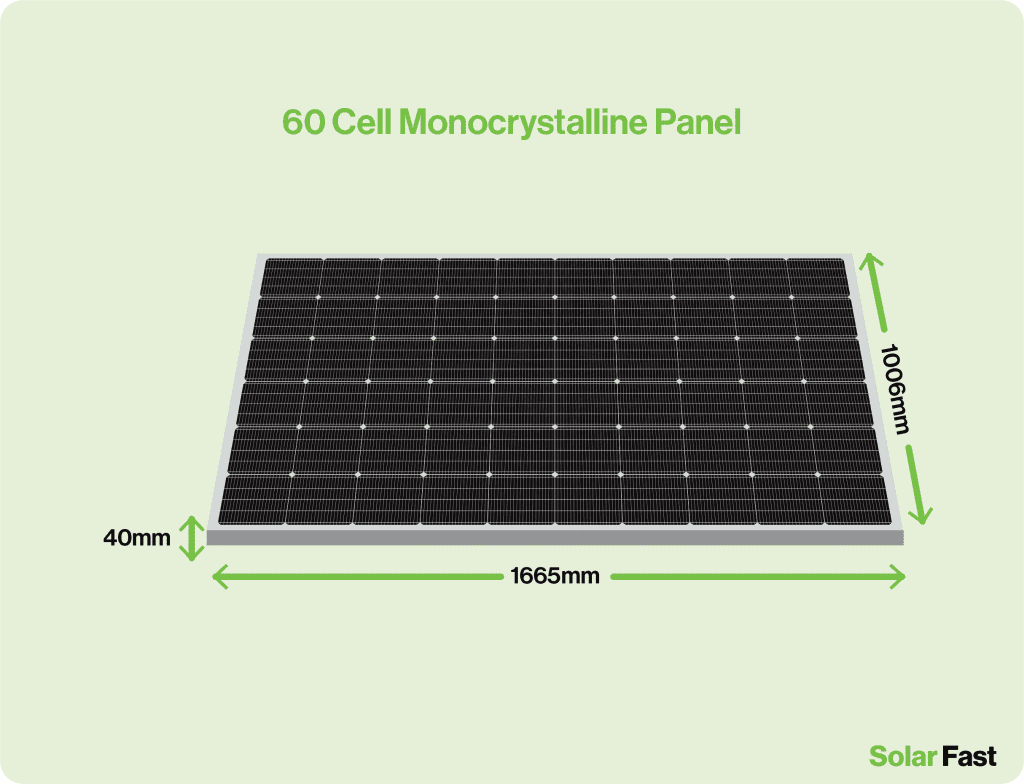
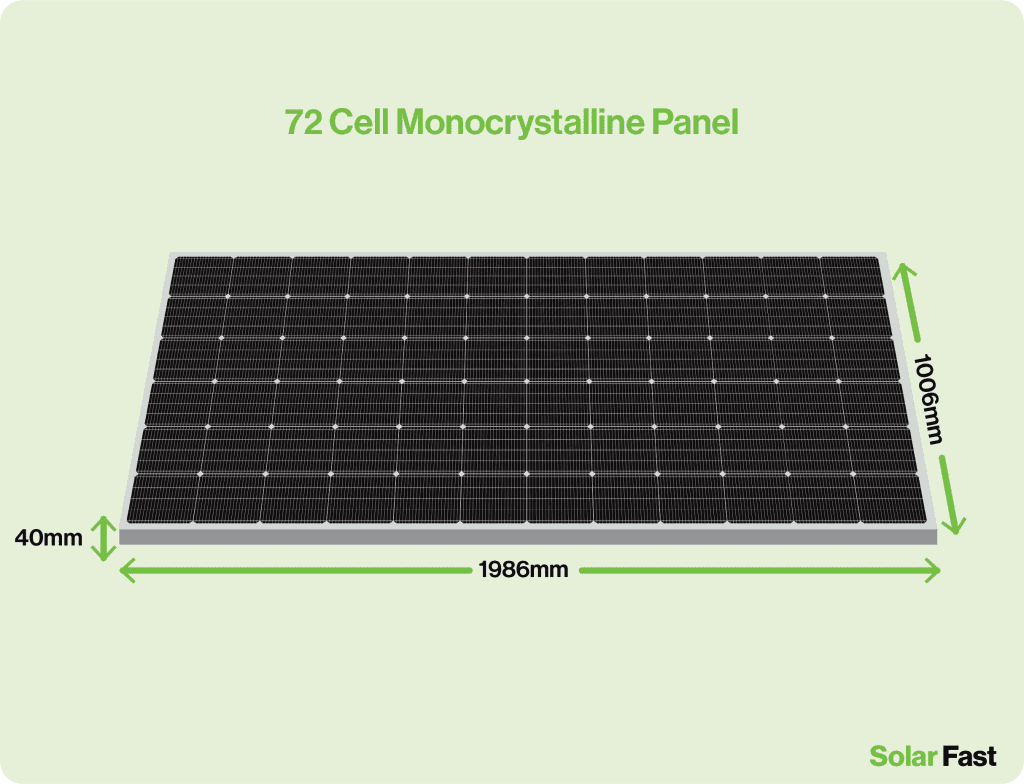
108 Half Cell Monocrystalline Panel
Half cell panels are at the cutting edge of solar technology and are now a very affordable option.
The basic science behind them is they have 54 separate cells and each cell is halved.
‘Cutting’ a cell in half means the electricity has less resistance on its way to your inverter.
This makes the Half Cell option more efficient than its full cell counterpart.
108 Half Cell monocrystalline panels are 1722 long by 1134 mm wide by 30mm high and have a maximum power of 420 watts.
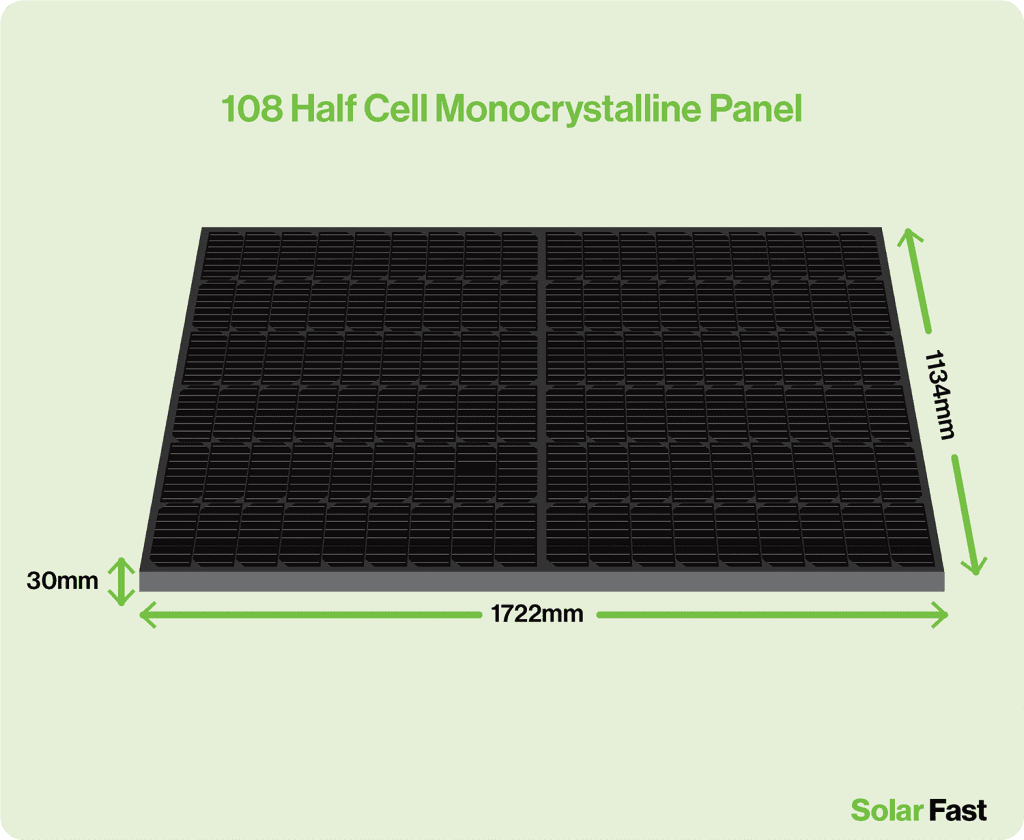
What other factors should I think about when working out how many solar panels I need?
There are a few other things to consider as the efficiency of your panels depends on the circumstances of your house.
Position of your home
The amount of sunlight hitting your roof will dictate how efficient your panels are.
As the UK is in the Northern Hemisphere, south facing roofs are the perfect option.
That doesn’t mean that other homes aren’t suitable for a full solar power installation though.
East or west facing roofs are also suitable for panels but you will see a slight dip in efficiency, of between 15-20%, depending on how far east or west the roof is.
While north facing roofs are not recommended there are ways to generate solar energy on homes like this.
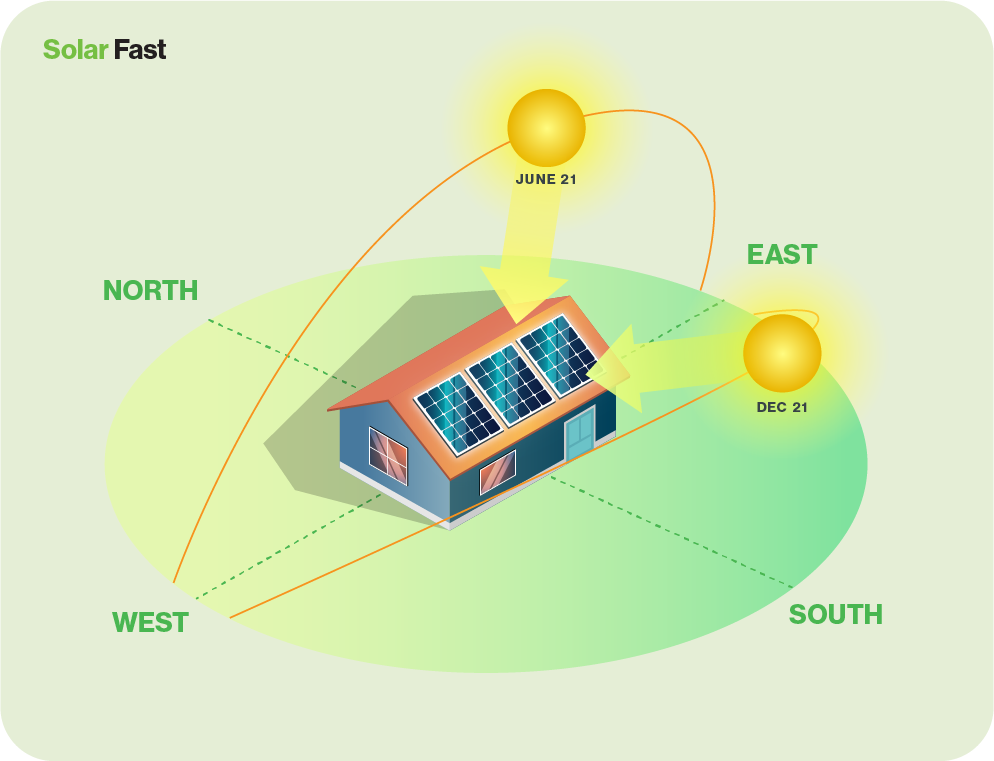
Roof space, strength and tiles.
Quite an obvious one but you are going to need plenty of space on your roof for the panels and it’ll need to be strong enough to support them.
Don’t worry though, you don’t need to get a calculator out and start doing maths, just pop into the loft and check the beams for damage or rot.
Do a visual check of the roof from the outside to ensure your tiles are secure and in good condition.
It’s also worth noting that the kind of tiles you have will have an impact too.
Rosemary, slate and concrete tiles are all perfect for mounting solar panels on. If your roof is metal, like on prefab homes, it is still possible to install your system but the frames will need more specialised fittings.
If your roof is either thatched or asbestos, or the tiles are held on with expanding foam, it’s not going to be safe to install a solar array.
Roof angle
The angle the sun hits a solar panel will affect that panel’s efficiency.
In the UK the perfect angle for a panel is between 35° and 40°.
Most traditional houses in England and Wales have roof pitches between 40° and 50° so your home is more than likely perfectly suitable for a solar array.
That said, panels will work at just about any angle, even panels on flat roofs can be angled.
If you fit your solar array to a flat roof you may need a few extra panels to generate the energy you need.
Learn more about the best solar panel angle.
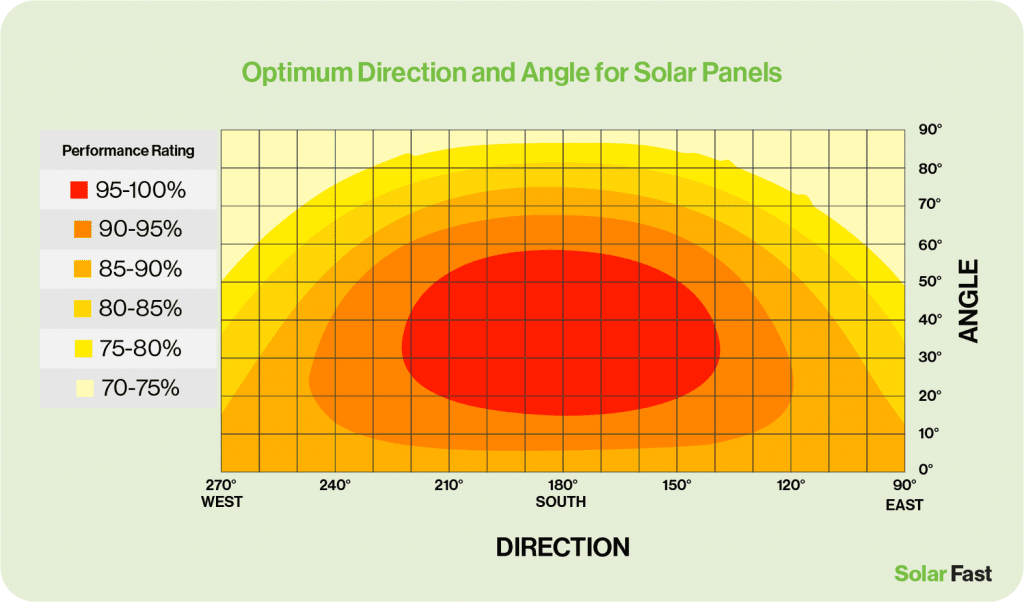
Daylight hours
The number of hours of daylight will affect how hard your solar array is working, the more hours of daylight, the more energy the system will produce.
You’ll notice we use the word ‘daylight’ rather than ‘sunshine’ as your panels are working whether the weather is sunny or overcast.
More bright sunshine does mean more efficiency but solar panels do work when it’s cloudy too.
The average amount of daylight in the UK varies from 8 hours in the winter to 16 hours 30 minutes in summer – and that only varies by 1 hour from the tip of Cornwall to the seashore at John O’Groats.
Can I power my house with only solar power?
Going totally off-grid and using your solar energy system to supply all your electricity is possible, but it’s not something that is cost effective or practical right now.
A household would have to meticulously plan how electric appliances are used, it would have to have a large battery array and, possibly, some kind of backup generator.
So, in a normal domestic setting, this is not something that you are aiming for.
However, you can install a cost effective system that caters for nearly all of your needs during the summer and even sell a little back to your energy supplier, saving you a lot of cash.
It’s just safer to have a connection to the grid though as in the winter time the system may struggle to keep up with demand.
Do I need a battery based storage system?
Following on from the previous question, we would always recommend battery storage.
The technology is improving so much, and prices dropping, that it makes financial sense to store the energy you collect during the day so you can use it after the sun goes down.
The price you sell electricity to the supplier is a fraction of what you pay for it, so you’ll save more by using it.
How many solar panels would I need for commercial installs?
We can’t tell you!
Commercial installs are completely bespoke so it would be foolish to try and guess how many panels you need.
It’s always best to get the experts involved in your business set up so you know you are saving as much money as possible.


